While every kid might want a room of their own, the reality is that sometimes it’s just not feasible. In smaller homes for families that are growing, sharing a room in quite common. In the U.S., nearly 2/3 of kids in families with more than one child share rooms. Shared rooms can help siblings bond and learn to share and compromise, which is why some kids share rooms to make more space for other family priorities like a home office or guest rooms.
Of course, shared rooms also come with their own challenges. Before putting your kids into a room together, it’s important to spend time thinking about how the room will be laid out and what the ground rules of the space will be. The rooms featured in this post are certainly cute and stylish, but they are also designed with functionality in mind.
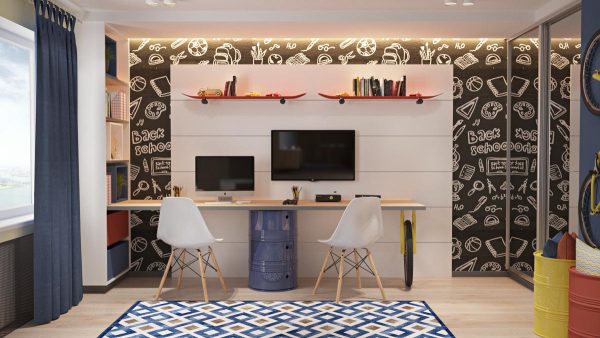
Visualizer: Kristina Bilynets
The first room was designed for two brothers to share.
This room perfectly illustrates an important tip in designing a shared kid’s space: don’t let any off the area go to waste.
By choosing a lofted bed design, there is still open floor space for kids to hang out and move around.
The vertical bike storage option is practical and along with the oil barrel storage buckets manages to give the room a bit of an industrial vibe.
Many kids rooms are designed without keeping seating in mind, but the fact is that kids and their friends are in their rooms a lot.
A comfortable sofa and beanbag chairs mean that the kids and their guests can sit and relax comfortably.

Visualizer: Tatyana Ryltsova
The next room takes a different approach, with colors that are quite a bit brighter than the first. The cute accessories throughout, including kids’ night lights by way of the Miffy dimmable light, give this room a very youthful vibe.
Indeed, another important tip for designing shared kids rooms is to let the kids who will live there help with the design.
The more that the children are able to contribute to the look and feel of the room, the more they will feel comfortable and happy there — even if they’re studying.
This fun and colorful room is definitely a space where kids would be happy to bring their friends.
Practical elements like lots of storage and a shareable desk certainly delight their parents.
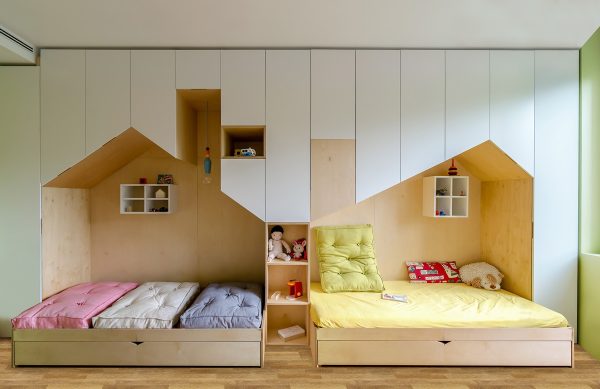
Visualizer: Another Studio
Even when kids are sharing a room, like in this apartment in Elemag, they will still have their separate lives.
This sleeping cubby design is ideal for the kids who live there, but when it comes time for sleepovers, things can get trickier.
Before moving kids into a shared room, make sure you have designated a plan for when the kids want to be alone with their own friends.
That could mean one child spends the night on the sofa, or the friends set up sleeping bags in the living room.
In this room, the modular cushions mean that a few kids could easily set up a comfy spot on the floor in this room or another.
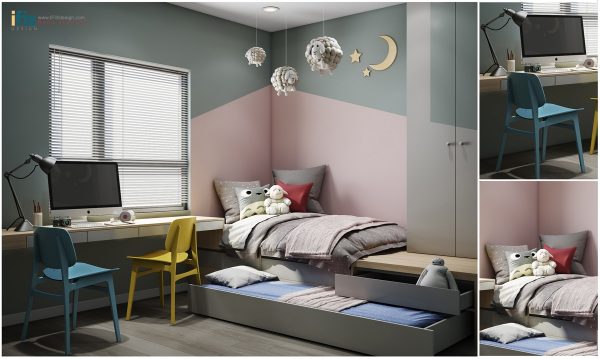
Visualizer: Le Nguyen Phong
Before planning any room, but particularly one that will require kid’s decor and kids sharing, it’s essential to plan out where everything will go.
In this small space, there simply isn’t room for all the furniture a couple of kids might want.
But with careful planning and a trundle bed, there is still room for everyone to be comfortable.
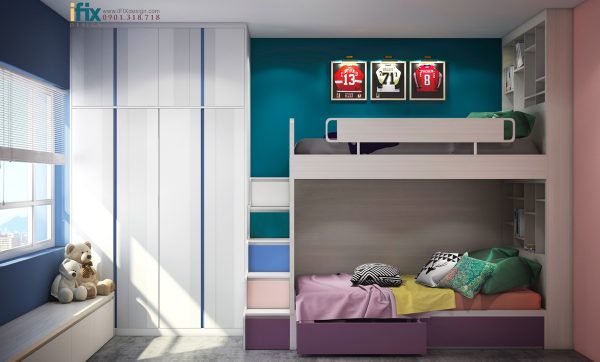
Visualizer: Le Nguyen Phong
The bunkbed design is an extremely popular choice for the kids’ beds in a shared bedroom.
Not only are bunkbeds fun for kids, they are tremendous space savers, utilizing vertical space and leaving more floor open.
The use of bunkbeds in this particular room is done deftly, leaving room for a sunny and welcoming two person desk.

Visualizer: KDVA Architects
While the unique planters in this shared room are notable, what’s most important here is the illusion of privacy.
The way that the twin beds in this space are divded by a wall give the room a clear division, where each child can retreat to his or her own “side” of the room.

Visualizer: Viktoria Tsikhotska
The way that this shared room brings in a nautical vibe without going over the top is quite interesting. The unique floor lamp is one element that doesn’t quite fit with the theme.
While a kids room does not necessarily require a theme, getting the input of a professional designer is another tip for a functional shared room.
A designer can make sure there is space for the required 2 person workspaces.
In fact, a designer can help arrange all the elements that your kid needs while ensuring the room isn’t too crowded.
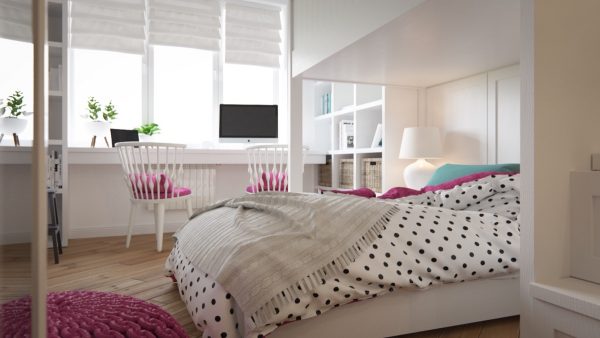
Visualizer: Viktoria Tsikhotska
Another helpful tip for planning out a shared bedroom is to choose a color scheme that is a bit more neutral.
The use of white in this room, from the bedside lamps to the desk chairs and walls, makes it much more malleable in terms of decor.
Sparkly bedroom pendant lights add a feminine touch, but the pops of color can easily be changed and updated as tastes change.
The neutral backdrop makes it easier for both occupants to agree on a look.
The unique wall shelf in this room perfectly illustrates the next tip: choose functional decor.
The more people that live in a room, the more crowded the space can become.
By choosing shelving and tables that are decorative, the room feels beautiful, but also has everything serve a purpose.
Of course, there is always room for a bit of frivolity like a playful teepee.
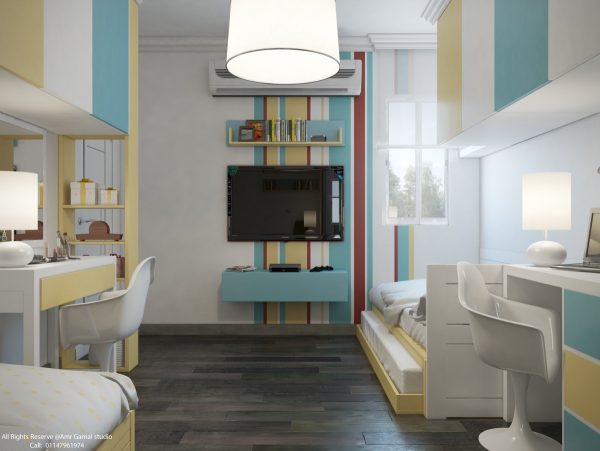
Visualizer: Amr Gamal
Most kids’ bedrooms are only shared between two siblings, but this one is actually home to three!
Identical table lamps
and desk chairs for each sibling gives each a space of their own, which is essential.
However, because all of the accessories are the same there’s no fighting over whose is better.
While not all siblings are cut out for sharing a room, with some design ingenuity, it is possible for kids to live in harmony.
Recommended Reading:
50 Kids Room Decor Accessories To Create Your Child’s Creative Haven
40 Beautiful Kids’ Beds That Offer Storage With Sweet Dreams
32 Kids’ Chairs And Stools To Seat Them With Style
Related Posts:


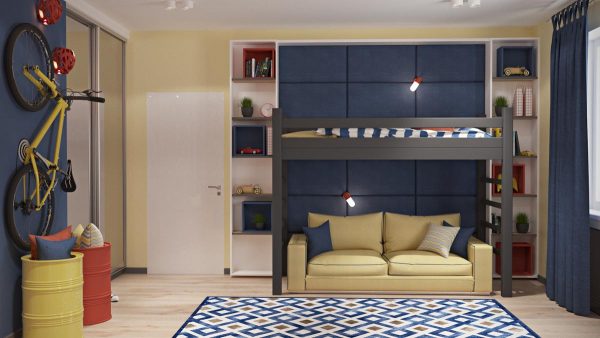

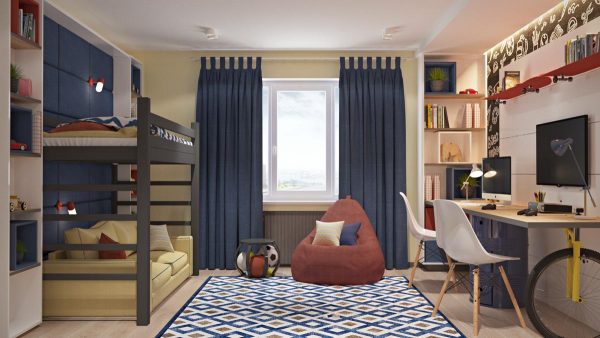
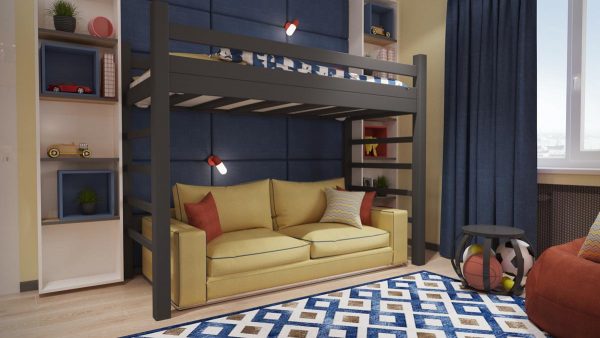


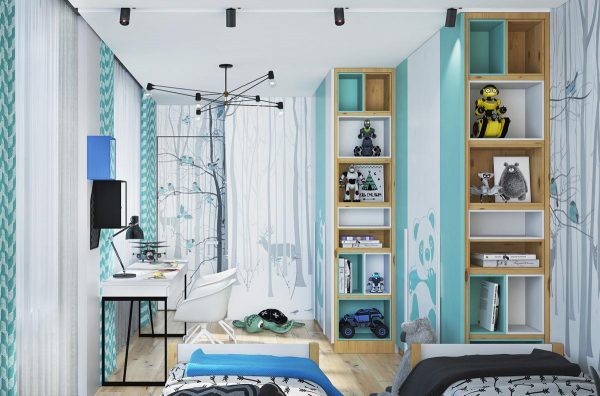
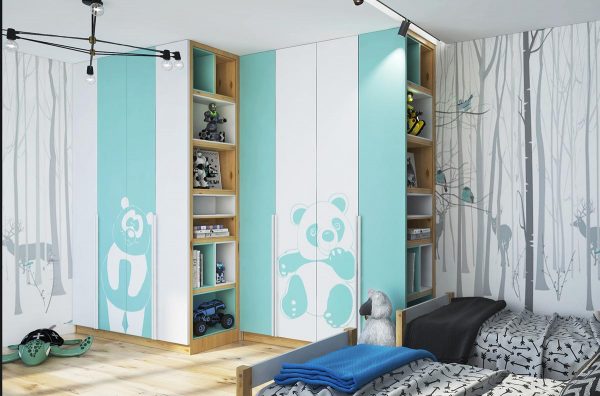
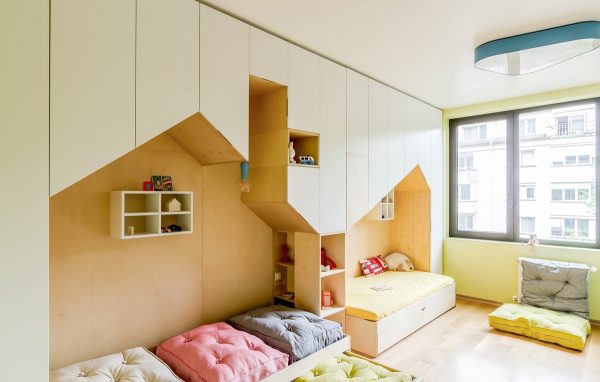
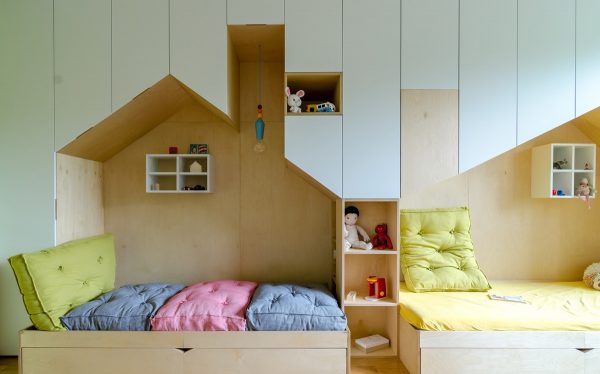

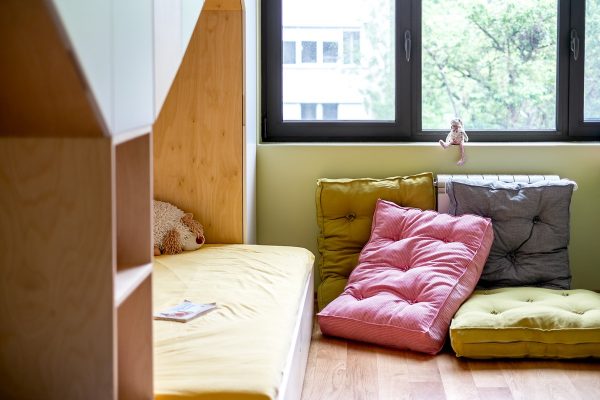


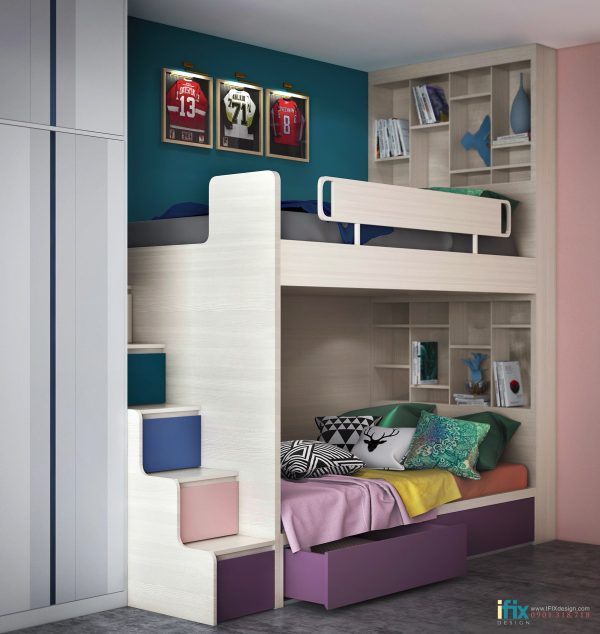
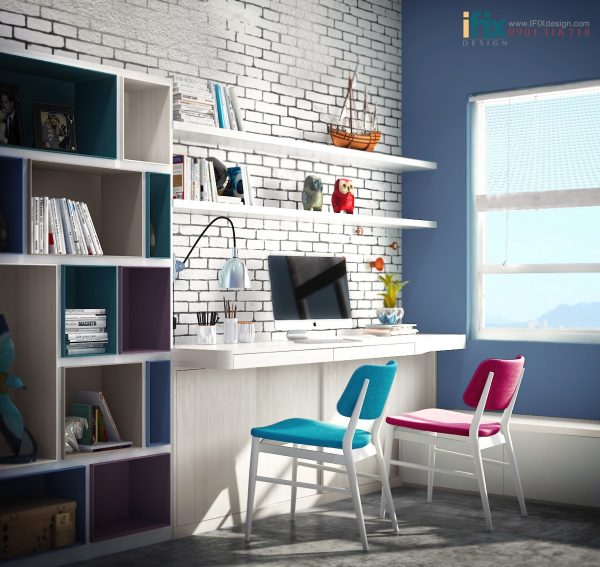
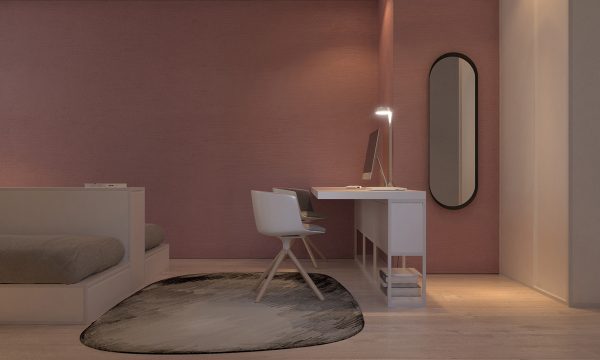
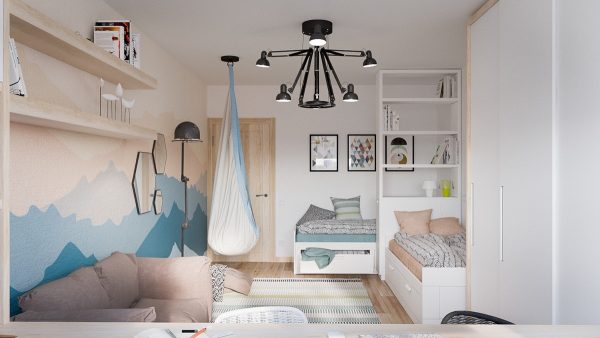
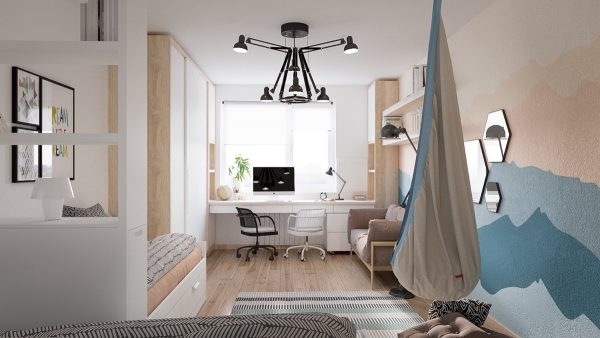
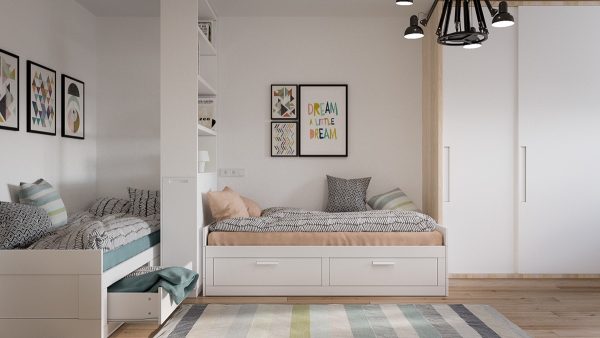

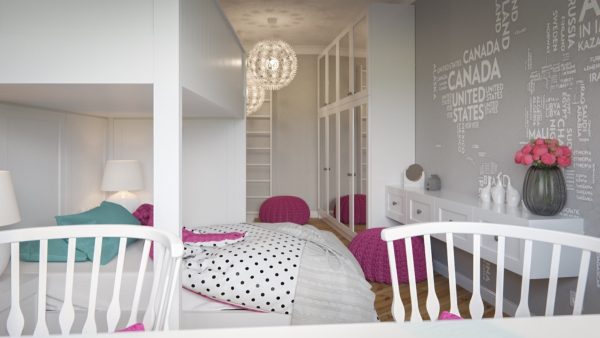


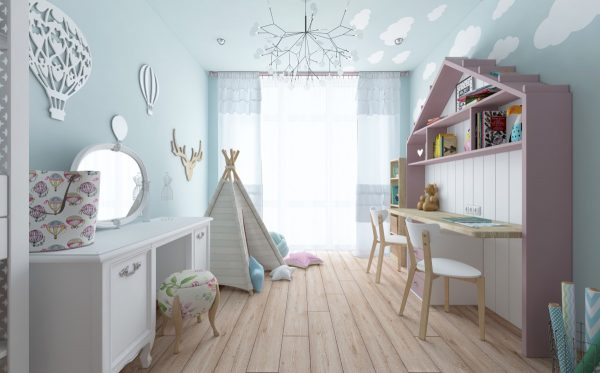

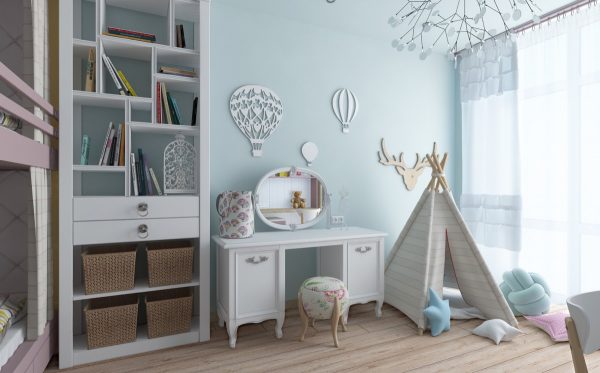



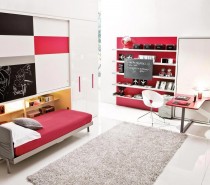 Transformable Space Saving Kids Rooms
Transformable Space Saving Kids Rooms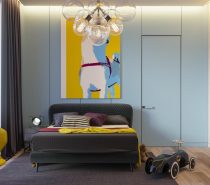 Awesome Kids Rooms Where Fun And Style Merge
Awesome Kids Rooms Where Fun And Style Merge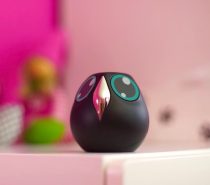 50 Owl Home Decor Items Every Owl Lover Should Have
50 Owl Home Decor Items Every Owl Lover Should Have Kids Room Ideas – Set 3
Kids Room Ideas – Set 3 Bunk Beds and Lofts for Teenagers and Kids
Bunk Beds and Lofts for Teenagers and Kids Shared Kids’ Rooms
Shared Kids’ Rooms